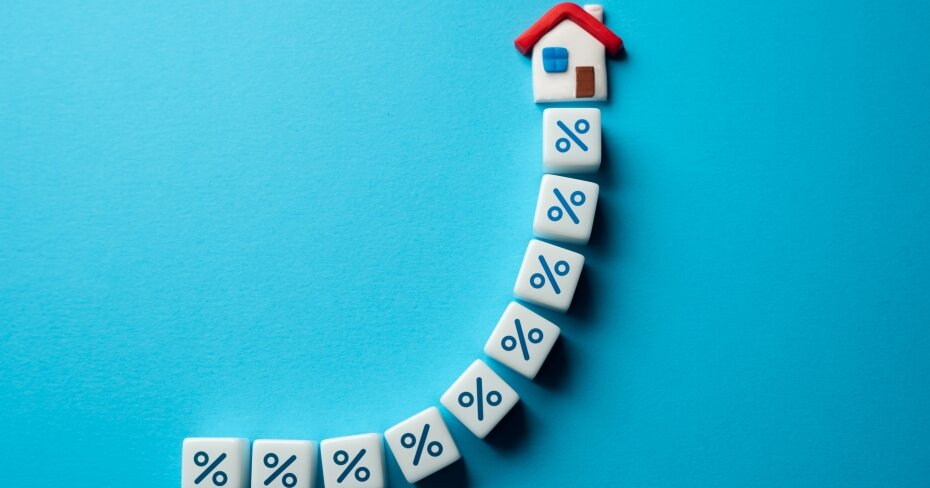What is negative amortization and how does it affect you?
By: Joel Kranc on September 21, 2023
The dream of nearly all homeowners is that time well into the future when they can burn their mortgage and know they are living payment-free in a fully paid-off home. That’s the dream.
The reality is that most of us are very far from that point in time, and are paying down what is very likely the largest loan we have or will ever have in our lifetimes. Simply, we take out a mortgage to buy our homes and begin the 25- or 30-year process of paying off that loan with interest. But since the Bank of Canada began introducing more rate hikes over the past year and a half, more Canadians are stretching out that process out, with some amortization periods lasting up to 35 years and longer.
Related: With interest rates rising, how might the mortgage stress test need to change?
What is negative amortization?
The amount of time a mortgage-holder takes to pay off their mortgage is the amortization period. And the more you pay back towards your principal, the lower your balance gets over time.
But what if you find yourself in a situation where the amount you are paying back to your lender on a fixed-payment variable rate interest loan doesn’t cover both the principal and interest of your loan?
Currently, three quarters of variable-rate mortgage holders in Canada are on fixed payments, and at least half of those borrowers have hit their trigger rate — that is, the point at which their payments no longer cover their interest.
For people who have surpassed their trigger rate, their lender may allow them to add the unpaid interest to the balance of their mortgage. So rather than payments decreasing over time, they are actually increasing. This, in turn, extends your amortization period and is known as negative amortization.
This is not a great place to be. Why? Negative amortization keeps you from repaying your loan and adds many years to the life of your loan. Also, you will pay a higher amount in interest charges.
Negative amortizations are becoming more common as interest rates have risen and housing prices have fallen. This has helped stave off arrears in Canada even as borrowing costs have climbed.
Related: How is a mortgage term different from an amortization period?
The state of extended amortizations in 2023
A year and a half ago, when the Bank of Canada began raising interest rates to curb inflation, many people started seeing interest payments on their variable rate mortgages going up. And in a rising interest rate environment, more and more payments ended up going towards interest, rather than the principal amount of the loan — with more trigger rates being hit.
The situation has become so important that the Office of the Superintendent of Financial Institutions (OSFI) is proposing guidelines for lenders to hold more capital that “aligns with the increased risk of mortgages in negative amortization with a loan-to-value ratio above 65% -- that is the outstanding balance is 65% of more of the value of the collateral.”
Negative amortizations cannot go on indefinitely. At some point the loan needs to amortize. CMHC, for example, allows negative amortization of up to 105 per cent of the original loan amount. For uninsured mortgages, federally regulated lenders set their own policies with approval from the OSFI.
Continued higher rates and the inability of homeowners to pay down or simply pay debts could lead to forced home sales, foreclosures and banks taking on bad loans onto their books – a perfect storm of debt catastrophes that no one wants. Also, extending amortization periods increases what you are going to owe on your mortgage because the longer your amortization, the more interest you are going to pay. Yes, your payments may be lower initially, but you will pay more over time.
What should you do if you’re facing a negative amortization?
For homeowners who find themselves in a negative amortization situation there are a few things you can do. First, be proactive. If you see yourself entering a negative amortization period, consider increasing payments or by making more frequent payments. Try to make lump sum payments towards your mortgage to reduce the principal balance and decrease the amount of interest accruing. You can also convert your variable rate mortgage to a fixed-rate mortgage, most commonly by refinancing. By locking in a fixed rate, you can create consistent monthly payments that are not affected by future interest rates hikes (until your term comes due). Finally, look into refinancing. It’s possible you can get a better rate than you are currently paying if your credit score has improved.
The prospect of interest rate hikes leading to negative amortization is not something anyone wants to get into. So it’s always wise to talk to your mortgage professional or lender to see what your options are. Try to anticipate the event before it occurs and keep an eye on rates as they clime (or decrease). You’ll be happy you did.
Read next: What are the penalties for breaking for breaking a variable mortgage versus a fixed one?
432e.jpg)
b188.jpg)
